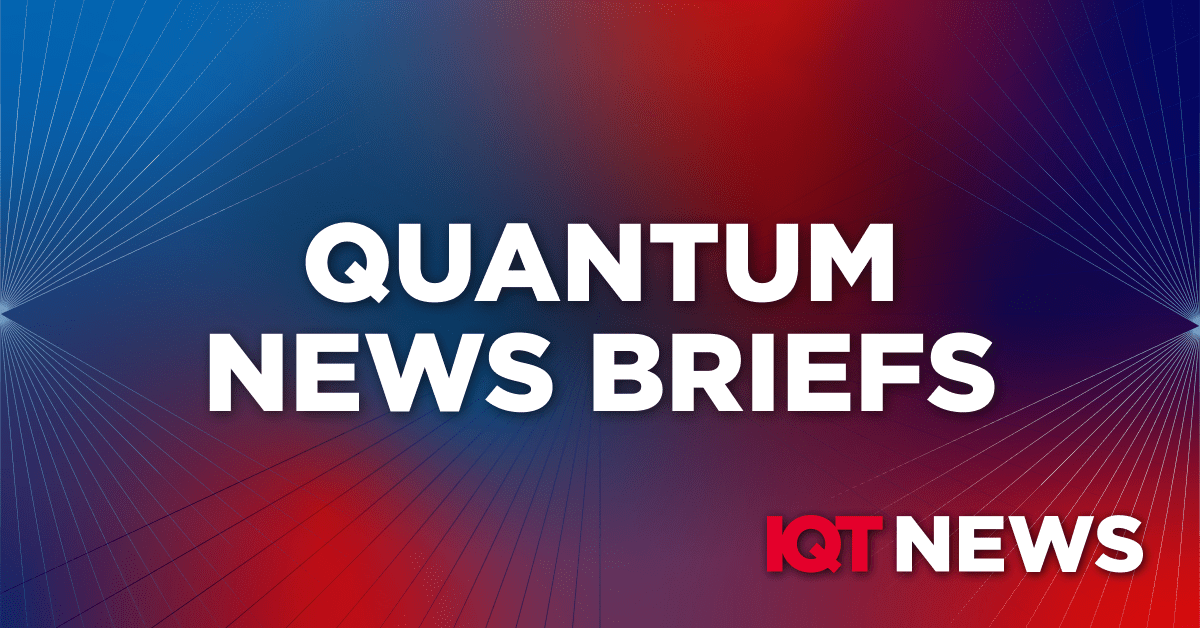Quantum News Briefs June 14: Riverlane joins the Quantum Energy Initiative • FermiLab opens a new quantum sensor & computing research center 100 meters underground • Korea Research Institute of Standards & Science develops new quantum sensor technology that leverages quantum entanglement

News Briefs:
Riverlane joins the Quantum Energy Initiative
 Riverlane has announced its acceptance into the Quantum Energy Initiative, a global community of quantum technology companies and research organizations committed to better understanding the physical resource cost of quantum technologies.
Riverlane has announced its acceptance into the Quantum Energy Initiative, a global community of quantum technology companies and research organizations committed to better understanding the physical resource cost of quantum technologies.
The rise of new technologies, such as artificial intelligence, has led to an exponential growth in computational power in recent years, causing data centres to become increasingly power-hungry (IEA, 2024). Originally designed to prioritise performance over energy efficiency, new techniques are being explored to curb their carbon footprint, but despite these efforts, the electricity usage of the world’s data centres is still forecasted to double by 2026 (IEA, 2024).
With quantum computers expected to solve specific problems much more efficiently than classical supercomputers, there’s growing hope that their integration with supercomputers in data centres could lead to significant energy savings and lower the amount of carbon emissions produced.
Riverlane is developing its core product – the Quantum Error Correction Stack (Deltaflow)– with energy efficiency as a key design principle. Riverlane’s Deltaflow.Decode ASIC chip uses less than 10mW and is the first decoder to concretely demonstrate high-performance at a small hardware resource cost. It’s been designed to accurately balance speed and hardware resource utilisation, meaning it decodes fast enough to keep up with a quantum computer while also producing a tiny resource footprint.
FermiLab opens a new quantum sensor & computing research center 100 meters underground
 A new quantum sensor and computing research center named the Quantum Underground Instrumentation Experimental Testbed, or QUIET is one hundred meters underground at Fermi National Accelerator Laboratory, according to the June 12 news release. Fermilab recently opened the doors to the underground lab, which will allow scientists to study the performance of qubits isolated from cosmic radiation.
A new quantum sensor and computing research center named the Quantum Underground Instrumentation Experimental Testbed, or QUIET is one hundred meters underground at Fermi National Accelerator Laboratory, according to the June 12 news release. Fermilab recently opened the doors to the underground lab, which will allow scientists to study the performance of qubits isolated from cosmic radiation.
As one of the first dedicated underground Quantum Information Science facilities in the U.S, QUIET will support research and development of QIS applications. While there are many unique aspects to QUIET, finding a space far enough underground and large enough to house such a facility was difficult but a good match for existing infrastructure at Fermilab.
The primary goal of QUIET is to understand the difference between the impact of gamma rays, X-rays, muons and beta particles on superconducting qubits. Superconducting qubits used in quantum computing are very susceptible to interactions with their environment, including radiation. QUIET will allow scientists to study the performance of qubits isolated from cosmic radiation.
Korea Research Institute of Standards & Science develops new quantum sensor technology that leverages quantum entanglement
 The Korea Research Institute of Standards and Science (KRISS) has developed a novel quantum sensor technology that allows the measurement of perturbations in the infrared region with visible light by leveraging the phenomenon of quantum entanglement. This will enable low-cost, high-performance IR optical measurement, which previously accompanied limitations in delivering quality results.
The Korea Research Institute of Standards and Science (KRISS) has developed a novel quantum sensor technology that allows the measurement of perturbations in the infrared region with visible light by leveraging the phenomenon of quantum entanglement. This will enable low-cost, high-performance IR optical measurement, which previously accompanied limitations in delivering quality results.
This latest KRISS research has allowed the use of visible light detectors to measure the light states in the infrared band, enabling efficient measurement without requiring costly and power-consuming equipment. It can be used in a wide range of applications, including the non-destructive measurement of three-dimensional structures, biometry, and the analysis of gas compositions.
The Quantum Optics Group at KRISS has presented a theoretical analysis of the factors that determine the key performance metrics of the quantum sensors and empirically demonstrated their effectiveness by using a hybrid interferometer. The research team reflected light in the infrared band onto a three-dimensional sample to be measured and measured the entangled photons in the visible bandwidth to obtain the sample image, including its depth and width. The team has successfully reconstructed a three-dimensional infrared image from measurements made in the visible range.



















